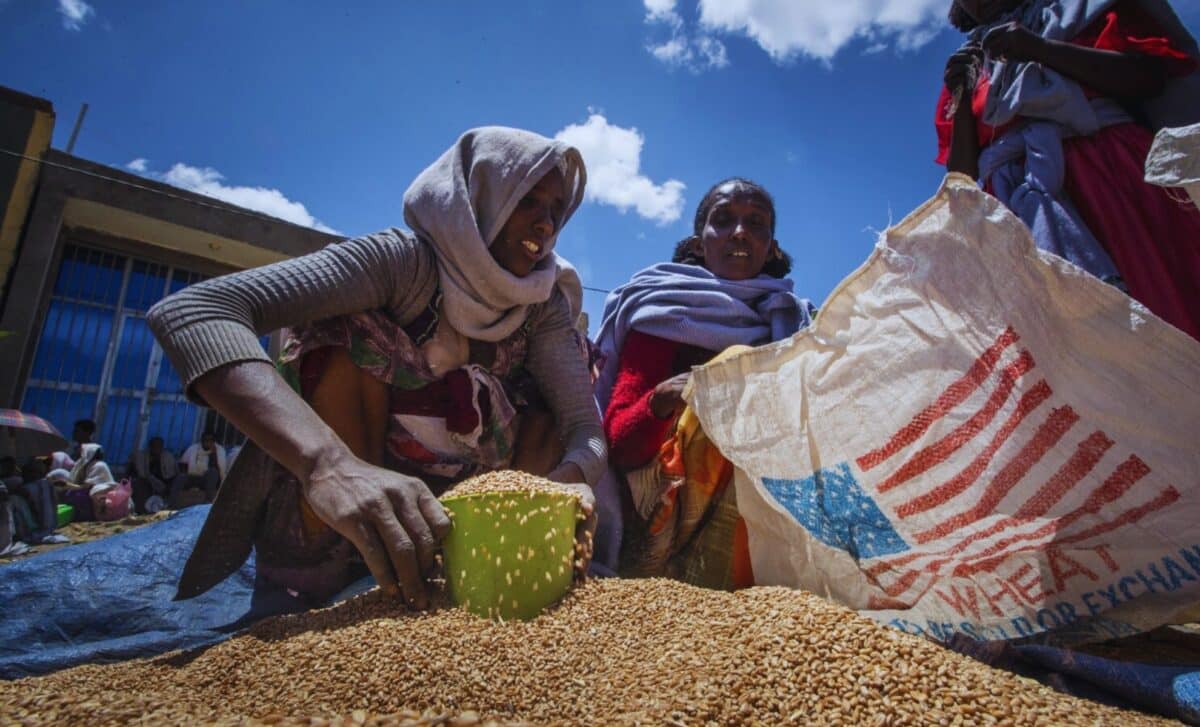The northern region of Tigray in Ethiopia, already grappling with the aftermath of a brutal conflict, is facing an escalating humanitarian disaster as a result of cuts to US aid.
The Trump administration’s overhaul of US foreign assistance programs has led to a disruption of vital aid flows to over 1 million people in the region who rely on emergency food aid and health services.
According to AP News, humanitarian organisations have warned that the ongoing withdrawal of funds has left many vulnerable groups without access to food, healthcare, and essential services, exacerbating the crisis in an already fragile region.
“We will just die in silence,” said 76-year-old Haile Tsege, one of the 2.4 million people in Tigray who depend on humanitarian grain, most of it provided by the US.
The US has historically been one of Ethiopia’s largest donors, providing billions of dollars in aid for various sectors, including food security, healthcare, and education.
However, the recent cuts, coupled with delays in the payment systems of the US Agency for International Development (USAID), have caused aid programs to halt across Ethiopia’s war-torn regions.
Disruptions to Emergency Food Aid and Health Services
The cuts to US aid have had immediate and devastating effects on the people of Tigray, where over 2.4 million individuals depend on food assistance.
Emergency relief distributions of grain, primarily provided by the US, have been halted, and food stocks are being left to rot in warehouses due to a lack of resources to transport them.
Teklewoini Assefa, head of the Relief Society of Tigray, described the situation as catastrophic, warning that the continued disruption would lead to widespread malnutrition and death.
The situation is compounded by the region’s broken healthcare system, which has already seen thousands of healthcare workers laid off due to funding cuts, according to local organisations.
Tigray’s health infrastructure, already devastated by the two-year conflict, is now unable to manage ongoing health crises such as malnutrition and disease outbreaks.
A report from the Associated Press revealed that child malnutrition rates have reached alarming levels in some areas, with 21% of children affected, far surpassing the World Health Organisation’s emergency threshold of 15%.
In addition to this, critical health programs, including HIV treatment and tuberculosis prevention, have been suspended. Local organisations are now struggling to maintain services with reduced staff and a lack of funding.
The Long-Term Impact on Recovery and Reconstruction
The long-term effects of the aid cuts will likely delay efforts to rebuild the region, which is still in recovery from the civil war that claimed the lives of hundreds of thousands.
Key programs aimed at rebuilding education, healthcare, and infrastructure have been placed on hold, as USAID workers remain on administrative leave.
Furthermore, projects to help survivors of sexual violence, many of whom were women and girls, have come to an abrupt halt, leaving the most vulnerable with little support.
As the humanitarian crisis deepens, organisations in Tigray and across Ethiopia are calling for a restoration of aid to prevent further loss of life and to allow for much-needed recovery in the region.
While emergency food aid is still being distributed, the ongoing aid cuts continue to threaten the survival of millions. The interruption of US assistance leaves the future of many Ethiopian communities uncertain.









